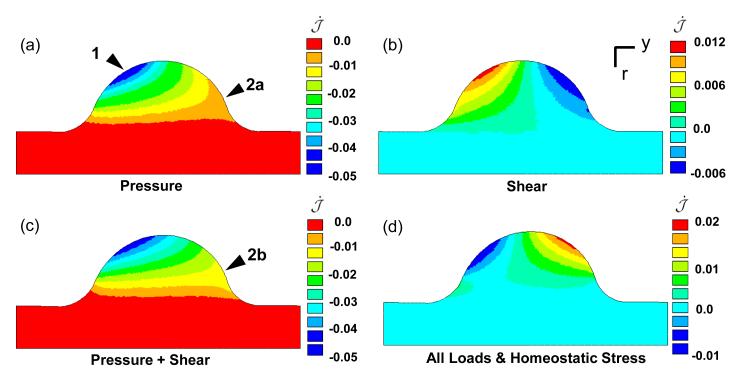Fig. 5.
Compressive fluid loads stimulate negative dilation of AV cushion. Color maps of after initial loading with a) pressure load only, b) shear tractions only, c) all applied loads, and d) all loads with homogenous homeostatic stress . The resorption rate was highest at the inflow surface of the cushion (arrow 1). The shear tractions increase the rate of resorption on the back side of the cushion at the interface with the myocardium (arrow 2a-b). Compressive homeostatic stress shifts dilatation rate into a positive growth range. Color map in units of [1/t].

